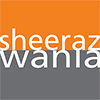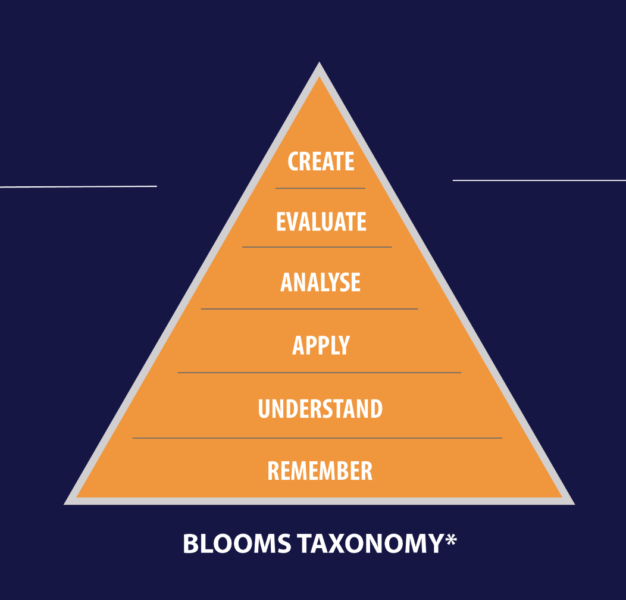FIG: The classification of educational objectives, known as Bloom's Taxonomy (Bloom, Engelhart, Furst, & Krathwohl, 1956] is one of the most recognized learning theories in the field of education. It helps educators create learning outcomes that target not only the ‘what’ but also the depth of learning they want students to achieve.]
___________________________________________________________________________________
Information and knowledge are not interchangeable terms. Knowledge is imparted while information is delivered. We live in a world with an influx of information. It is around us 24/7 and we are at all times exposed to it. Rather information over-load is one of the main causes of lack of knowledge.
How much information to give, what details and in which area are key to any course design. But what is most important is the ‘why’ question. It is the WHY that helps connect the dots and knowledge is gained by being able to fit the information together into a coherent whole. Knowledge when secured forms a chain reaction. Any information given in isolation, remains just that; information. How we as educators help students metamorphose that information into knowledge is crucial. How we help students process and examine the raw data is paramount.
For instance, during the course of my design classes I discuss history and show examples and work beyond that white male Western perspective that design portrayal historically is so focussed on. I had a final year student tell me last term that this was the first time he had heard about any designers outside of his own Western context or been exposed to their work. Showing work and exposure is a start, but it’s not enough. I have questioned this notion for a long time now. How do we interpret, consume and teach design? And this is not just about the superfluous tributes we pay to our own culture [not a huge fan of the term in the way it is mostly used and referred to as a limitation and not as an evolving entity], context or language. Design goes deep, its understanding even deeper. How can we as educators, belonging to any region expand upon its impact and influence? For one, I try and get my students to create connections; social, political geographical, historical and beyond. Do some research with questions like e.g. what was happening in ‘X’ part of the world, artistically, politically, socially when the A. M. Cassandre was creating his Normandie, Lithograph poster in 1935 in Paris as a part of the Art Deco movement.
Amazing things happen when they are the ones that discover a 3000-year-old Persian visual heritage or the posters from Shanghai’s golden age. It helps put design in perspective and takes the understanding of design and the context beyond mere information giving, as now the connections are being made and networks are being created in their minds.
This made me think of one of my favourite writers on education Paulo Freire and his idea of ‘critical consciousness’ in education. The idea that education should give tools to challenge, analyse and construct viewpoints via discussion and reflection. Design educators need to do that more. Courses need to be connected to each other, they need to build off each other; not just in regards to skills and information, but more in regards to knowledge creation. This can happen through encouraging research, dialogue, discussion and exchange of ideas.
With respect to information, interestingly, Socrates questioned the appropriateness and impropriety of writing. He was of the belief that the written word made one dependent and destroyed memory. He believed that the written word would make people ‘hearer of many things’ but not necessarily knowledgeable. We see that impact multiplied a 100-fold with social media and online resources. There is no death of information, rather it is non-stop. What the learner of today needs is to be able to filter and analyse information to be able to construct and create knowledge and our role as educators is to facilitate that. Information becomes knowledge once it is applied, experienced and also to some extent personalized. It leads to insight and understanding in turn.

